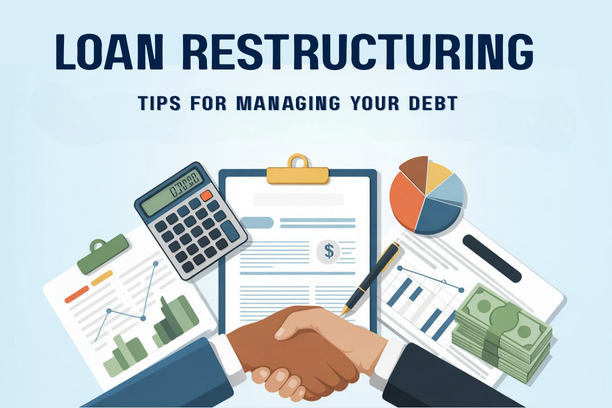For most Filipinos, purchasing a home is a long-term investment that requires significant financial planning. An installment-based home loan is the most common and practical way to finance this dream, allowing borrowers to pay for their property in manageable monthly payments over an extended period. With various lenders in the market, understanding the top installment-based home loan options in the Philippines is crucial for making an informed decision that aligns with your financial capacity and homeownership goals. This comprehensive guide will explore the leading choices available, highlighting their unique features, benefits, and considerations to help you navigate the path to acquiring your dream home.
1. Understanding Installment-Based Home Loans
Before diving into specific loan options, it’s essential to grasp the fundamental mechanics of installment-based home loans. This understanding will empower you to compare offerings more effectively and identify the most suitable product for your needs.
The Mechanics of Repaying Your Home Loan
An installment-based home loan, also known as a mortgage, is a debt instrument secured by real estate. The borrower repays the loan amount (principal) plus interest in regular, usually monthly, installments over a predefined period, known as the loan term. This structured repayment method allows borrowers to spread out the cost of a significant purchase, making homeownership accessible.

Early in the loan term, a larger portion of your monthly payment typically goes towards covering the interest charged on the outstanding balance. As the loan progresses and the principal balance decreases, a greater share of your payment will be allocated to reducing the principal. This is known as amortization. Banks calculate interest on the diminishing balance of the loan, which means that as you steadily pay down the principal, the interest component of your future payments gradually reduces. Understanding this diminishing balance method is key to appreciating how your payments are distributed over time and how you can potentially save on total interest by paying more than the minimum or shortening your loan term.
Key Factors Influencing Your Loan Choice
Beyond the basic mechanics, several critical factors influence which installment-based home loan option is best for you. Considering these elements systematically will help you make a financially sound decision.
- Interest Rates (Fixed vs. Variable): Home loan interest rates are typically offered as either fixed or variable. Fixed rates remain constant for a set period (e.g., 1, 3, 5, 10 years), offering predictability in monthly payments. Variable rates, on the other hand, can fluctuate based on market conditions, potentially leading to lower or higher payments over time. Your risk tolerance and outlook on future economic conditions will influence your preference.
- Loan Term: This refers to the duration over which you repay the loan, typically ranging from 5 to 30 years in the Philippines. A longer term means lower monthly payments but results in higher total interest paid over the life of the loan. Conversely, a shorter term involves higher monthly payments but significantly reduces the overall interest cost.
- Loan Amount: Lenders assess your capacity to pay based on your income, credit history, and the appraised value of the property. The maximum loanable amount usually ranges from 70% to 90% of the property’s value, requiring you to provide a down payment for the remaining percentage.
- Eligibility Requirements: Each lender has specific criteria regarding age, citizenship, income stability, employment status, and credit history. Meeting these prerequisites is fundamental to loan approval.
- Fees and Charges: Beyond interest, home loans involve various fees such as appraisal fees, processing fees, documentary stamp tax (DST), mortgage redemption insurance (MRI), and fire insurance. These upfront costs can add a significant amount to your total initial outlay. Understanding these factors is crucial for evaluating the top installment-based home loan options in the Philippines.
2. The Heavy Hitters: Commercial Banks as Top Installment-Based Home Loan Options in the Philippines
Commercial banks play a dominant role in the Philippine home loan market, offering a wide array of products catering to various income brackets and property types. Their extensive reach and comprehensive services make them a primary choice for many homebuyers.
Universal Banks: Breadth of Services and Competitive Rates
Universal banks, such as BDO Unibank, Bank of the Philippine Islands (BPI), Metrobank, and UnionBank, are at the forefront of providing installment-based home loans. They cater to a broad clientele, from salaried individuals to self-employed professionals and Overseas Filipino Workers (OFWs).
- BDO Unibank: As the largest bank in the Philippines, BDO offers a robust home loan program with competitive interest rates and flexible terms. They are known for their strong branch network and digital capabilities, making the application process accessible. BDO caters to a wide range of property types, including house and lot, condominium units, and vacant lots. Their loan amounts typically go higher than other options, making them suitable for mid-to-high value properties.
- Bank of the Philippine Islands (BPI): BPI is another leading bank known for its stable interest rates and efficient loan processing. They offer diverse fixed-rate terms (e.g., 1, 3, 5, 10, and 15 years) to give borrowers predictability in their payments. BPI’s strong customer service and online platforms enhance the borrower’s experience. Their eligibility criteria are generally strict, focusing on stable income and good credit standing, which allows them to maintain competitive rates.
- Metrobank: Metrobank provides a wide selection of home loan products tailored for different needs, including financing for residential properties, lot acquisitions, and home construction. They offer competitive fixed and variable rates and are recognized for their flexible repayment schemes. Metrobank emphasizes personalized service, with dedicated loan officers guiding applicants through the process.
- UnionBank of the Philippines: A digitally innovative bank, UnionBank offers a modern and often streamlined application process for its home loans. While they might have a smaller physical footprint than BDO or BPI, their focus on technology appeals to a tech-savvy generation of homebuyers. They provide competitive rates and aim for a faster approval process for eligible applicants.
These universal banks offer the advantage of higher loan amounts, longer terms, and a broader range of services (e.g., credit cards, other personal loans) that can be bundled. Their stringent eligibility criteria often translate to lower interest rates compared to less regulated lenders, making them one of the top installment-based home loan options in the Philippines for qualified borrowers.
Thrift and Rural Banks: Niche Offerings and Localized Service
While universal banks dominate the market, thrift banks and rural banks also offer installment-based home loans, often catering to specific market segments or localized needs.
- Thrift Banks: These banks, like China Bank Savings and RCBC Savings Bank (now merged with RCBC), typically focus on consumer and housing loans. They may offer slightly more flexible terms or cater to niche markets that universal banks might overlook. Their loan amounts might be smaller, but their processing can sometimes be more personalized.
- Rural Banks: Primarily serving rural and agricultural communities, rural banks offer loans that are often tailored to the specific economic activities and needs of their local areas. While their home loan products might not be as extensive as universal banks, they can be an accessible option for individuals in provinces where major banks have limited presence. Their strength lies in local expertise and personalized service, which can be beneficial for borrowers who prefer a more community-focused approach.
These specialized banks contribute to the diverse landscape of top installment-based home loan options in the Philippines, particularly for those seeking localized services or smaller loan amounts.
3. The Government Advantage: Pag-IBIG Fund
For many Filipinos, the Pag-IBIG Fund is the most accessible and affordable institution for home financing. Its government mandate to provide shelter to its members distinguishes it significantly from commercial banks.

The Unmatched Affordability and Accessibility of Pag-IBIG
The Pag-IBIG Housing Loan is arguably the most advantageous installment-based home loan option for eligible members due to its highly subsidized interest rates and flexible terms.
- Lowest Interest Rates: Pag-IBIG’s interest rates are consistently lower than those offered by commercial banks, making monthly amortizations significantly more manageable. For example, as of 2025, their 1-year fixed rate is around 5.75%, considerably lower than typical bank rates. This long-term savings on interest can amount to hundreds of thousands, if not millions, of pesos over the life of the loan.
- Longest Loan Terms: Pag-IBIG offers repayment periods of up to 30 years, providing the lowest possible monthly payments for a given loan amount. This extended term helps alleviate the financial burden, particularly for low and middle-income earners.
- Broad Eligibility: While commercial banks often have strict income and credit score requirements, Pag-IBIG’s eligibility criteria are more inclusive. As long as you are an active member with at least 24 months of contributions (which can be a lump sum payment if needed), and have the capacity to pay, you generally stand a good chance of approval.
- Affordable Housing Program (AHP): Pag-IBIG has a special program for minimum wage earners and low-income members, offering an even lower interest rate (as low as 3% per annum) for loans up to PHP 580,000. This initiative directly addresses the housing needs of vulnerable segments of society, making homeownership a tangible reality for more Filipinos.
The blend of affordability, accessibility, and member-centric benefits positions Pag-IBIG as a top, if not the premier, choice among top installment-based home loan options in the Philippines.
Special Programs and Considerations for Pag-IBIG Loans
Beyond its standard offerings, Pag-IBIG also provides specific programs and requires members to understand certain aspects of their loan.
- Housing Loan for OFWs: Pag-IBIG has dedicated programs and streamlined processes for Overseas Filipino Workers, recognizing their unique financial situations and their significant contributions to the Philippine economy. OFWs can often apply through Pag-IBIG satellite offices abroad or appoint an Authorized Representative in the Philippines.
- Membership Contribution Requirement: To be eligible for a Pag-IBIG housing loan, a member must have at least 24 months of continuous savings. However, members who do not meet this can opt to pay the lump sum equivalent of 24 months’ contributions to immediately qualify.
- Loanable Amount Limitations: While the maximum loanable amount is PHP 6 million, the actual amount you can borrow is heavily influenced by your monthly income and your Total Accumulated Value (TAV) with the fund. This ensures that the loan remains affordable and sustainable for the member.
- Loan Purpose Flexibility: Similar to commercial banks, Pag-IBIG allows its housing loan to be used for various purposes, including outright purchase, construction, home improvement, or even loan take-out from another institution.
4. Making Your Choice: Comparing the Top Installment-Based Home Loan Options in the Philippines
Choosing the right home loan is a critical decision that impacts your financial future. A careful comparison based on your personal circumstances is key.
Commercial Bank vs. Pag-IBIG: A Decision Framework
The choice between a commercial bank and the Pag-IBIG Fund often comes down to your financial profile and priorities.
- For Higher Loan Amounts & Faster Processing: If you have a stable, higher income, an excellent credit score, and need a larger loan amount (e.g., for premium properties), commercial banks like BDO or BPI might be more suitable. They often offer a quicker approval process for qualified borrowers and can accommodate larger loan values.
- For Affordability & Accessibility: If you are a Pag-IBIG member, especially with a low to middle income, and prioritize the lowest possible interest rates and longest terms, the Pag-IBIG Housing Loan is likely your best bet. It provides an unmatched affordability that commercial banks cannot typically match. The eligibility criteria are also more forgiving for those with less established credit histories or non-traditional income sources.
- For Specific Property Types or Locations: For properties in very rural areas, a local rural bank might sometimes offer more tailored options due to their specific local market knowledge, though major universal banks and Pag-IBIG have broad coverage.
Ultimately, the best approach is to get pre-qualified or obtain loan quotations from at least two commercial banks and the Pag-IBIG Fund. Compare the Effective Interest Rates (EIRs), the total fees, the monthly amortizations, and the overall customer service experience.
Tips for a Successful Home Loan Application
Regardless of which option you choose among the top installment-based home loan options in the Philippines, following these tips can lead to a smoother application process:
- Improve Your Credit Score: Pay all your existing debts on time and keep your credit utilization low. A good credit score can unlock better interest rates.
- Prepare All Documents: Have all required personal, income, and property documents ready and organized. Incomplete submissions are a common cause of delays.
- Save for Your Down Payment and Fees: Aim for a down payment of at least 20%. Remember to also save for closing costs (transfer taxes, registration fees, DST, MRI, appraisal, and processing fees), which can add another 3-5% of the property’s value.
- Be Honest and Transparent: Provide accurate information in your application. Any discrepancies can lead to delays or even rejection.
- Consult with Loan Officers: Don’t hesitate to ask questions. Loan officers are there to guide you through the process and clarify any doubts.
Conclusion
The Philippines offers a robust landscape of top installment-based home loan options in the Philippines, catering to diverse financial profiles and homeownership dreams. From the comprehensive services and competitive rates of universal banks like BDO and BPI to the unmatched affordability and accessibility of the Pag-IBIG Fund, aspiring homeowners have viable pathways to acquire property. By understanding the mechanics of home loans, diligently comparing various offerings, and meticulously preparing for the application process, you can confidently choose the right financial partner and embark on your journey to owning a home.













